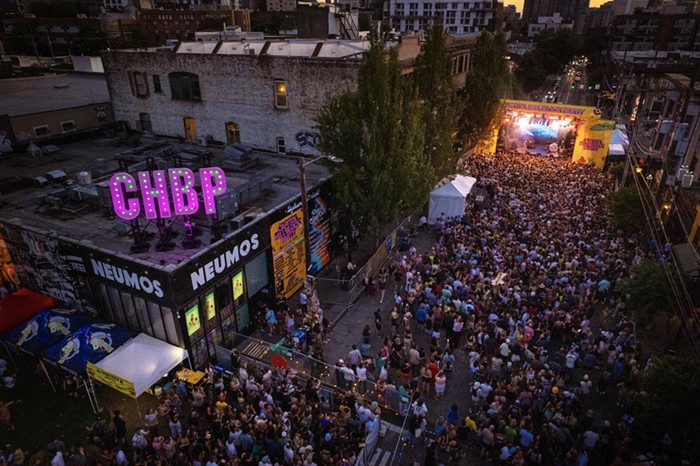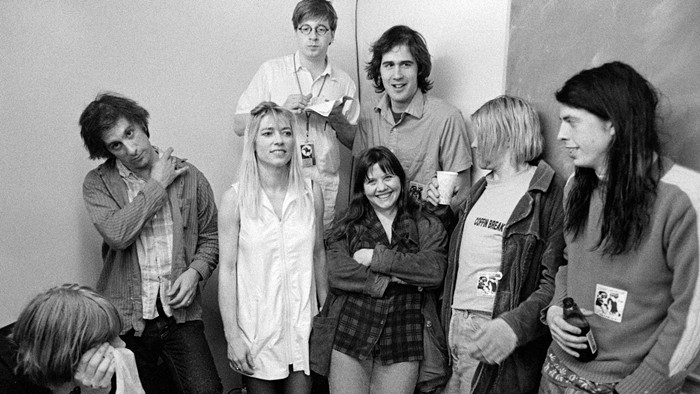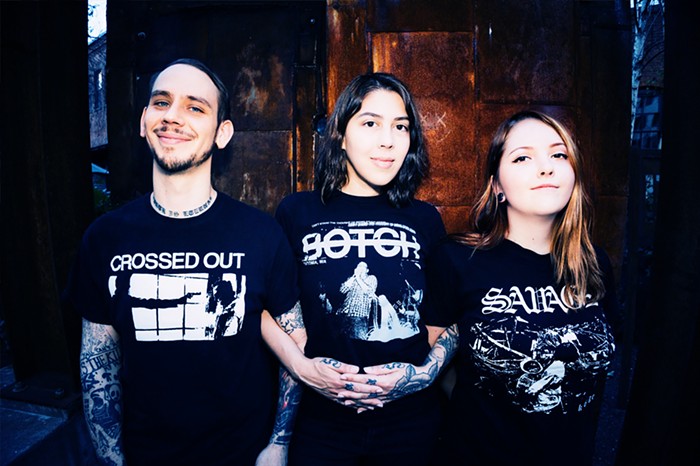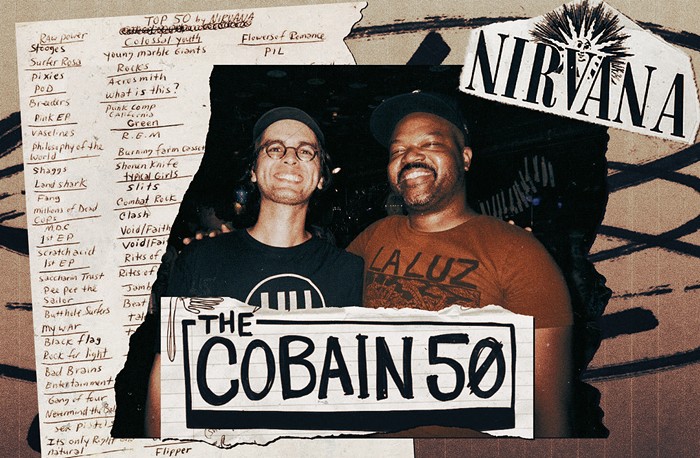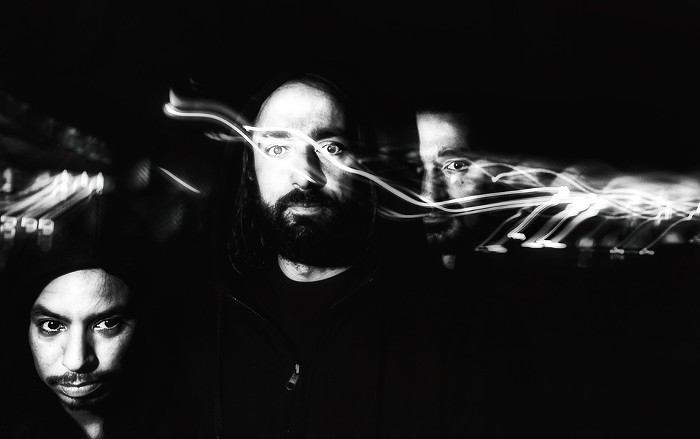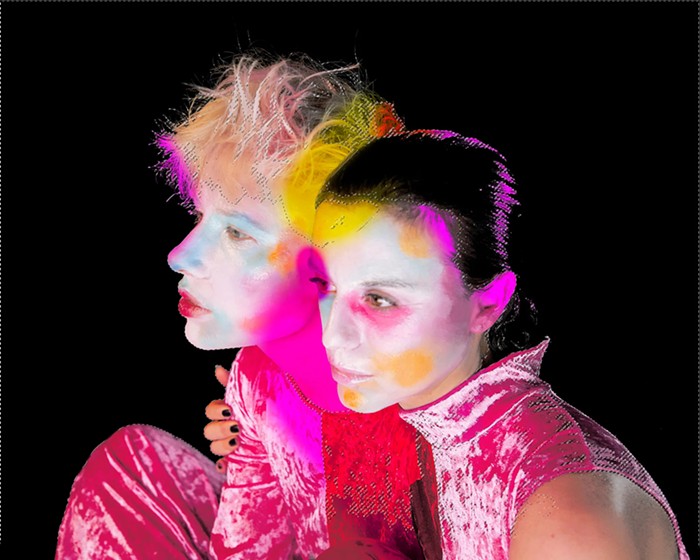Not long ago, Sleepy Eyes of Death couldn't seem to get through a show without suffering crippling technical difficulties. At the Showbox Sodo's lounge, they blew a fuse three times in one set, killing everything but drums and guitar each time. At the Vera Project, their fog machines set off a fire alarm, forcing the venue to be evacuated until the fire marshal arrived to give the all clear. At King Cobra, during the 2008 Capitol Hill Block Party, they played for 30 minutes before the sound guy was even able to get their synthesizers dialed into the mix.
"It was just too much," says Keith Negley (drums, keyboards), of the Block Party incident. "Too much gear and not enough time [to set up and sound-check]. Apparently we had more gear than they had actual lines, so they couldn't even run all of our setup."
Not bad for a band that started in 2004 with longtime friends Andrew Toms (keyboards, guitar) and Joel Harmon (drums, keyboards) toying around on just a couple of keyboards and one drum machine, making music that Harmon describes as "a little on the poppy side." The group expanded to include Negley and guitarist Cassidy Gonzales (live, the band are also assisted by Brandon Lanich on colored lights and fog), and the solidified quartet began steadily amassing an alarming array of electronic equipment.
"At one point, it was just insane," says Negley. "We had like seven or eight synths synched up with MIDI. It was so much work to plug all those keyboards in together onstage in the dark. Half the time you didn't know if you set it up right before you started playing, so you start the show and just hope everything is plugged in properly, 'cause you don't find out until later, when a certain keyboard is supposed to come in but doesn't."
Still, Sleepy Eyes have always tried not to be too much of a headache for sound guys. "We understand that we're a burden," says Negley, "and we try really hard to be extra diligent about that." And since the Block Party incident, the band members have endeavored to greatly simplify their live setup, eliminating several synthesizers and much of the MIDI synching, and using far fewer effects pedals.
"It seemed like a lot of it goes over people's heads live," says Negley. "People respond to energy, stage energy, the drums, and the tones—they're not going to notice, like, if it's an analog reverb or a digital reverb."
Wisely, Sleepy Eyes now save their most meticulous sound design for the studio, where they most recently completed their new EP, Dark Signals, (out January 20 on mass.mvmnt/Sleep Capsule) with veteran local producer Matt Bayles. Like their 2007 full-length, Street Lights for a Ribcage, the EP's six songs are largely instrumental, layering precisely arpeggiating analog keyboards, sweeping synth pads, vocoded vocals, alternately blurry washes and sharp stabs of guitar, and both programmed beats and pounding live drums. The songs range from the aggressive autobahn night-drive of "Shattered Limbs" to the suspenseful stalking of "Pierce the Air" to the breathtaking final liftoff of "Crushed by Stars." It all sounds rather like an M83 record with just the vocal pop songs sucked out.
Indeed, the most recognizable lyrics on Dark Signals come via "Final Heart Beats Black," whose dozen or so words are vocoded into what may as well be Hopelandic, the consonants clipped by the synth treatment, the vowels stretched out untethered into space. I'm pretty sure I heard "final... no more... only," and I may have heard the words "parking," "begging," and/or "sleep"—it's hard to say. (The few snatches of vocals on the slow-swirling song "Metastatic" are much the same.) In any case, though all band members contribute lyrics, they approach vocals as just one more instrument in the mix. Their processed singing is meant more for mood and texture than textual meaning, and its trembling, melancholy tone comes through clear enough.
The band aren't aiming to make a pop record anyway, and Negley, who recorded much of Dark Signals himself before taking the tracks to Bayles for polishing, is totally satisfied with the record. "This EP is probably the first time where it actually sounds like it's supposed to sound," he says. "Before, we were letting the technology, like, run us, but now we have a better grasp on how sound works."
The band, whose name comes from a samurai film series (Toms and Lanich both work at the U-District's beloved Scarecrow Video), take their inspiration from such film-score legends as Tangerine Dream, Goblin, Vangelis, and John Carpenter (the Dark Signals album art, created by Negley, was inspired by Tron). But they're quick to dismiss the idea of them as strictly soundtrack buffs or synth nerds or, worse, vintage M83 clones (a band who also wear their cinematic loves on their sleeve).
"I still take a lot of influence from old post-rock bands," says Negley, "like Mogwai, to name one. [Guitarist Gonzales, absent from this interview, is a big fan of Isis.] It's almost less about whether it's keyboard versus guitar, and more about how to layer tones, how to layer melody and harmony, structuring—things like that."
Live, their rockier tendencies can be felt in the band's hard-hitting drums and heavy bass (though they have no bass player, they get plenty of bowel-rumbling low end out of their synths), as well as in their adept transitions from delicate quiet to big, crushing crescendos. All of which, along with the band's much-discussed light show, helps make the lack of a lead singer seem like no great loss.
"We do take into consideration how people see us live," says Negley. "And that is an issue—that we completely negate that element that's supposed to traditionally connect with the audience. But we try to be as engaging as possible without having that person right up front, you know, pointing and looking at people and grinning."
In fact, Sleepy Eyes of Death are overwhelming enough without a lead singer or an overly complicated stage setup, and they're bound to have plenty of people right up front at their show, looking and grinning—the ones in the audience. ![]()

